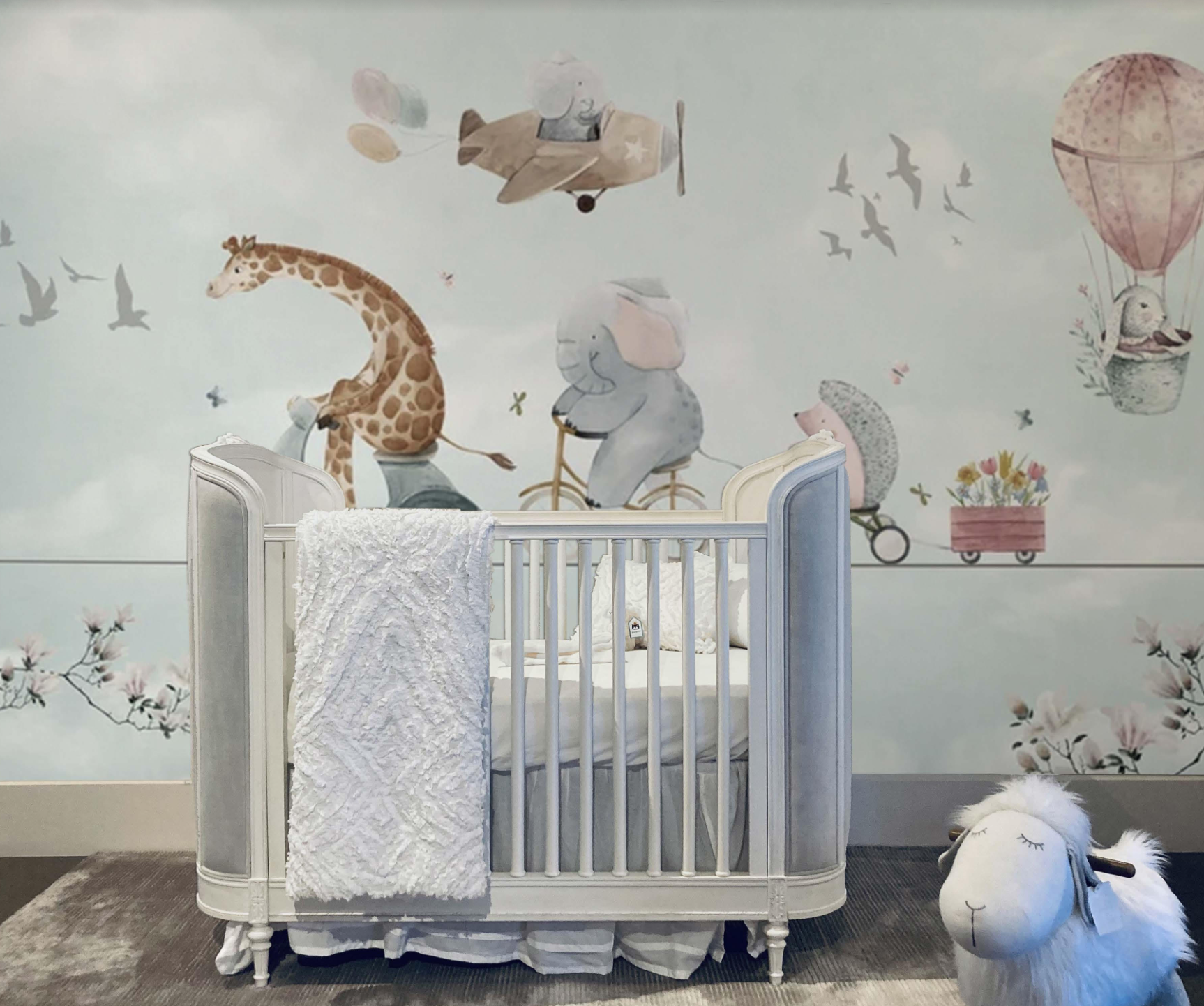The Science Behind Color Psychology in Early Childhood Development and The Importance of Choosing Colors When Designing Children's Spaces.
Ever wonder how much impact color can make in children? Especially during the ages 0 to 6 years old? The spaces our children explore have the ability to increase their creativity, problem solving, independence and confidence. As a healthcare interior designer, I’ve had the privilege of designing spaces that nurture children’s growth, learning, and well-being. Color is one of the most critical, but yet often underestimated design elements. While it might seem like a simple aesthetic choice, the colors we select for a baby’s nursery, pediatric interiors, child’s bedroom, playroom, schools or really any children’s space have a profound impact on their development, mood, and even health.
Let’s delve into why choosing the right colors is so important, and explore the science of color psychology in early childhood.
Why Color Matters in a Child’s Room
Children are more sensitive to their environment than we might think, and colors are one of the first aspects they interact with. While adults may see a room’s color as a backdrop, to a child, it’s an essential part of their learning and emotional experience.
A child’s brain is constantly developing, absorbing stimuli from the world around them. The right color choices in their environment can either support this growth or hinder it. Colors influence everything from cognitive development to emotional regulation. By selecting the appropriate scheme, we can create spaces that help children feel calm, energized, focused, or creative.
The Science Behind Color Psychology in Early Childhood
Years of research support the idea that children respond to different colors in unique ways. As early as infancy, children begin perceiving colors, although their full spectrum vision develops over time. Here’s how various colors can impact a child’s emotions and behavior:
Blues and Greens: Cool colors like soft blues and greens are calming and can reduce anxiety, making them ideal for nurseries or areas where children need to relax or sleep. These hues help lower heart rates and encourage a restful environment, perfect for a soothing bedtime routine.
Warm Colors (Yellow, Orange, Red): While these colors stimulate energy and creativity, they should be used carefully. For instance, soft yellows can create a happy and welcoming space, but intense reds or oranges might lead to overstimulation, especially in areas meant for sleep or quiet play.
Pastels and Neutrals: These muted shades, when used as a base, provide a subtle canvas that allows pops of color to be more intentional. They’re also timeless and versatile, growing with the child without needing constant redesigns.
Understanding these emotional and psychological effects allows us to design rooms that align with the needs of the child’s specific stage of development.
Tailoring Colors to Different Ages
Full Service Interior Design AM Interior Design
Just as children's needs change as they grow, so should the colors in their environments. For newborns, soothing tones like pastels or soft neutrals create a gentle introduction to the world. As toddlers, brighter colors that stimulate curiosity and exploration become more appropriate. For school-aged children, colors that promote focus and concentration—such as soft greens or blues—can support learning and personal growth.
Full Service Interior Design AM Interior Design
Designed with MOA Architecture
Designing for Function and Flexibility
In addition to the psychological effects, it’s essential to design with flexibility in mind. The right color palette for a nursery should be adaptable as the child ages, and should be easy to modify with accessories like pillows, rugs, or art. By selecting neutral tones as a base and incorporating bold accent colors, a room can evolve with the child without the need for frequent overhauls.
Full Service Interior Design AM Interior Design
Practical Tips for Creating the Ideal Space:
You understand the importance of strategic decisions. The choice of color in a child’s space shouldn’t be left to chance or personal preference alone. Here are some practical guidelines to implement:
Consider the Purpose of the Room: For spaces meant to energize or promote creativity, like playrooms or art spaces, lean toward brighter, stimulating colors. For sleeping areas, opt for more soothing tones that encourage relaxation.
Think About Natural Light: The amount of natural light can greatly affect how colors are perceived. Bright rooms can handle bolder colors, while darker spaces may benefit from lighter tones to avoid feeling too enclosed.
Use Color to Set Boundaries: In multifunctional spaces, use color to define different areas. For example, a reading nook could be painted a calming blue, while a play area features splashes of energetic yellow or orange.
Stay Flexible with Accent Colors: Furniture, toys, and textiles offer an easy way to introduce or change colors as the child’s tastes evolve. This allows you to refresh the space without repainting entire walls.
Full Service Interior Design AM Interior Design
Healthcare | Pediatric Interiors
Conclusion: Designing with Intention
Color is not just about aesthetics; it’s a tool that can shape a child’s development, behavior, and emotional well-being. When we understand the science behind how children perceive and respond to color, we can create spaces that support their growth and provide them with the emotional nourishment they need.
With over a decades of experience in designing pediatric interiors schools, libraries and homes for young families, I’ve seen firsthand the transformative impact that thoughtful color choices can have. It’s essential to make informed decisions when designing spaces for children—ones that prioritize their well-being, growth, and happiness through intentional color selection.
Written by Andrea Meats






